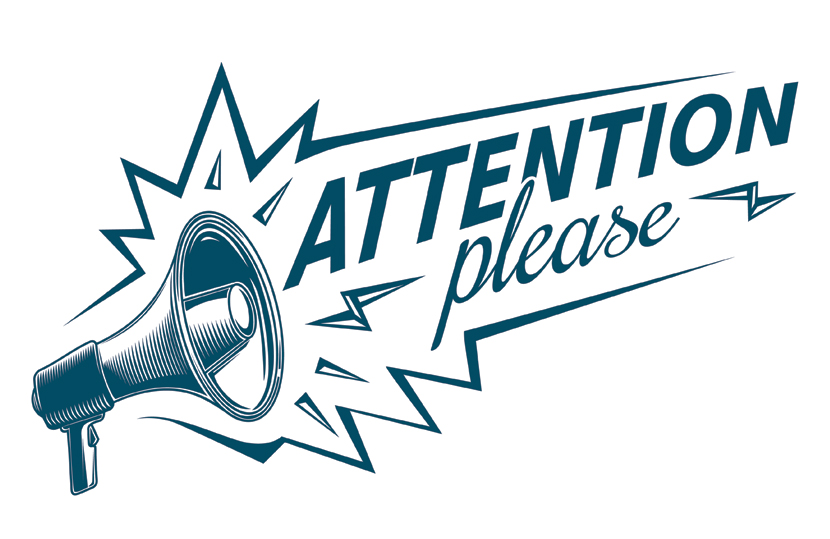This article appears in the Fall 2018 magazine issue of DOCUMENT Strategy. Subscribe.


©2018 DOCUMENT Strategy
We often talk about the value of simplicity in terms of clarity. For example, is a letter or form easy to understand? Does it use plain language? Is the information well organized?
While clarity is important, there’s arguably something even more valuable about simplicity—attention.
The human brain is terribly lazy. The harder the task is, the less it’s interested. As Daniel Kahneman notes in his book Thinking, Fast and Slow, “A general ‘law of least effort’ applies to cognitive as well as physical exertion. In the economy of action, effort is a cost, and the acquisition of skill is driven by the balance of benefits and costs. Laziness is built deep into our nature.”
Replace the word “skill” with “knowledge,” and you have the challenge facing most customer communications out there. Often, our brains are left to wonder, “Why are you bothering me with this?” and look for any excuse to bail.
The human brain is terribly lazy. The harder the task is, the less it’s interested. As Daniel Kahneman notes in his book Thinking, Fast and Slow, “A general ‘law of least effort’ applies to cognitive as well as physical exertion. In the economy of action, effort is a cost, and the acquisition of skill is driven by the balance of benefits and costs. Laziness is built deep into our nature.”
Replace the word “skill” with “knowledge,” and you have the challenge facing most customer communications out there. Often, our brains are left to wonder, “Why are you bothering me with this?” and look for any excuse to bail.
- Headline or subject line confusing? Forget it.
- No clear indication of why it’s relevant? Forget it.
- Dense paragraphs? Forget it.
- Nothing that directs us to key pieces of information? Forget it.
Recognizing our own tendencies can help you overcome the “law of least effort” with your audience. The structure and language within these communications need to assure people, “This isn’t going to be hard.”
If your writing doesn’t invite them over that initial hurdle, nothing else matters.
This is especially true in industries that often cause confusion and anxiety—financial services, healthcare, and utilities, for example. The combination of personal distractions and complex information, on top of our aversion to effort, can make this small hurdle seem more like a high jump.
In the “law of least effort,” Kahneman writes that there’s a second piece to this concept, “The law asserts that if there are several ways of achieving the same goal, people will eventually gravitate to the least demanding course of action.”
This is especially true in industries that often cause confusion and anxiety—financial services, healthcare, and utilities, for example. The combination of personal distractions and complex information, on top of our aversion to effort, can make this small hurdle seem more like a high jump.
In the “law of least effort,” Kahneman writes that there’s a second piece to this concept, “The law asserts that if there are several ways of achieving the same goal, people will eventually gravitate to the least demanding course of action.”
In the context of customer communications, that can mean picking up the phone: “I’m confused by this letter you sent; explain it to me.” This failure to capture the reader’s attention prompts a call, which takes time to resolve and occupies a customer service representative who could have been assisting another customer with more pressing concerns or questions.
Let’s take it a step further: Consider the above scenario when the recipient fails to respond within 30 days. A letter is sent to a customer, which is intended to alert and help her avoid the potential issue, but it’s not written or structured in a way to highlight why it’s important or what’s required of her. She soon receives a bill from the provider for services she thought were covered. Now, she’s more than confused when she picks up the phone—she’s angry.
Let’s take it a step further: Consider the above scenario when the recipient fails to respond within 30 days. A letter is sent to a customer, which is intended to alert and help her avoid the potential issue, but it’s not written or structured in a way to highlight why it’s important or what’s required of her. She soon receives a bill from the provider for services she thought were covered. Now, she’s more than confused when she picks up the phone—she’s angry.
How well do you think that call is going to go? How could it have been avoided?
I’ll offer one valuable tip: Get to work—or rather, give good writers the time to do the work.
I’ll offer one valuable tip: Get to work—or rather, give good writers the time to do the work.
There are best practices for simplifying customer communications but no template. For example, each customer service letter will have a different answer for how to get people’s attention. Those answers will be different for a bank than they are for an airline, and they’ll be different for each airline because they have different personalities. Audience, context, topic, and tone of voice all play a role.
You won’t know what works for your organization unless you give that challenge to your writers, who can strip away the unnecessary and bring the critical forward in a way that feels right for your brand and customers.
You won’t know what works for your organization unless you give that challenge to your writers, who can strip away the unnecessary and bring the critical forward in a way that feels right for your brand and customers.
Let them spend time with the problem. Simplification requires what British philosopher Bertrand Russell called “the painful necessity of thought.” Achieving it spares your customers of that burden.
Chad Cipoletti formerly served as the Group Director of Brand Communication at Siegel+Gale, where he built comprehensive messaging platforms and distinct brand voices for clients across a wide range of industries. For more, visit www.siegelgale.com.
Chad Cipoletti formerly served as the Group Director of Brand Communication at Siegel+Gale, where he built comprehensive messaging platforms and distinct brand voices for clients across a wide range of industries. For more, visit www.siegelgale.com.









